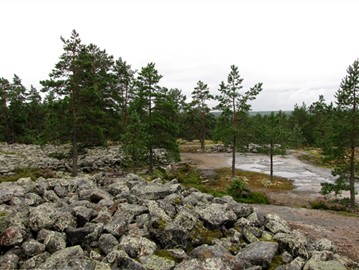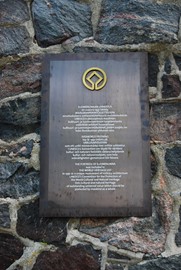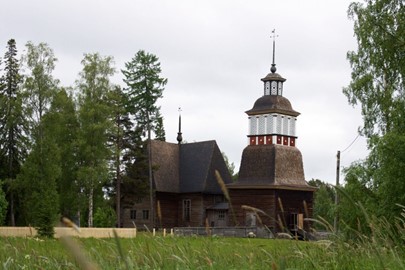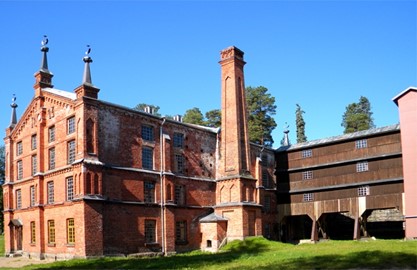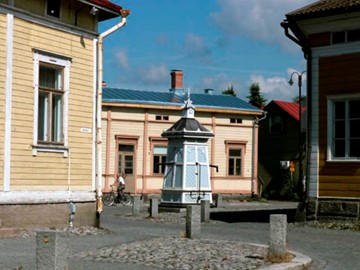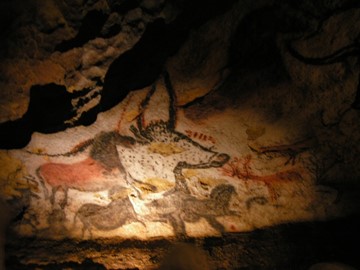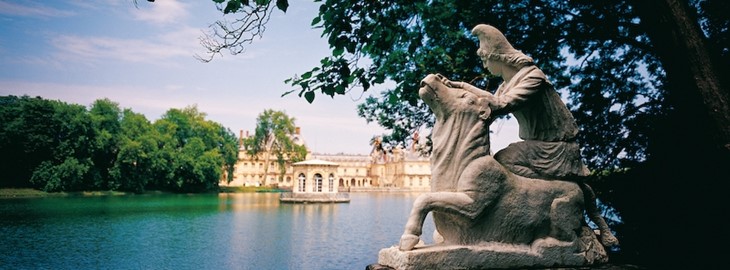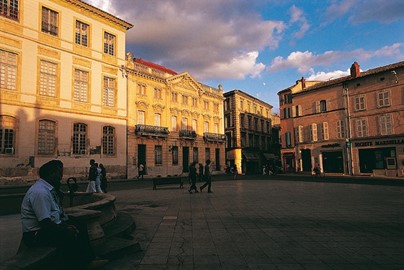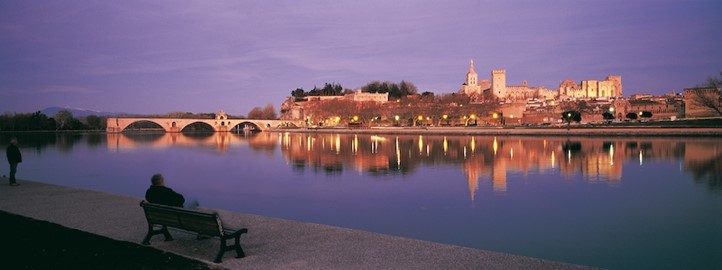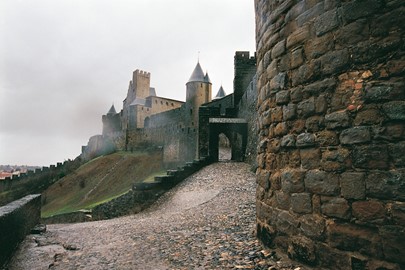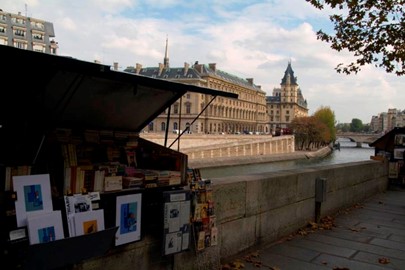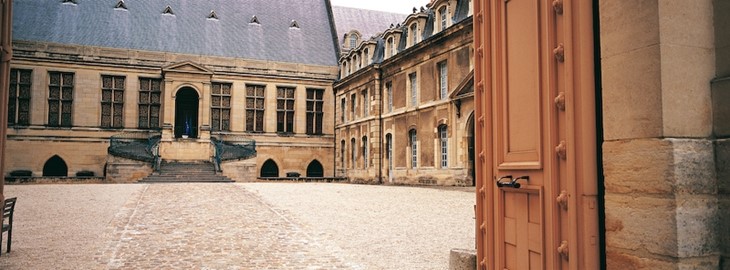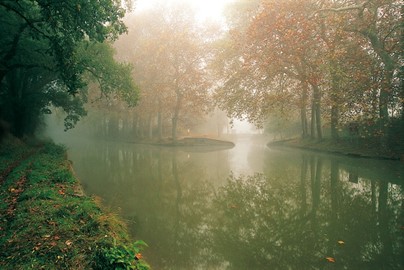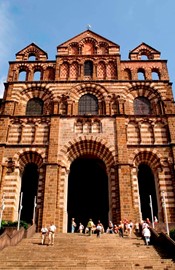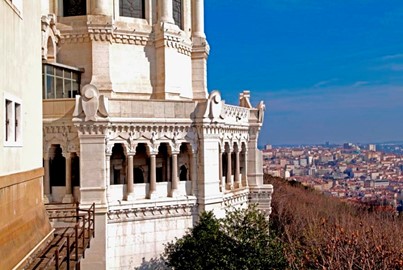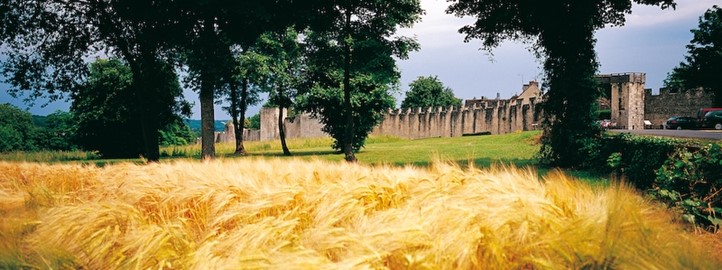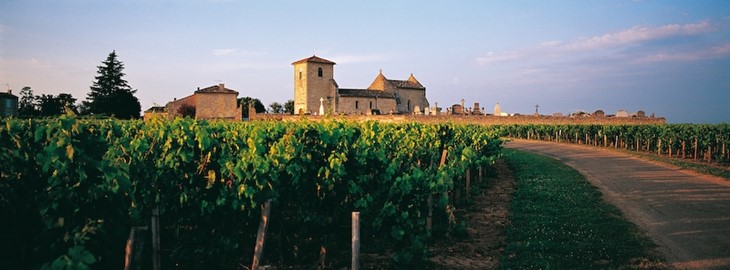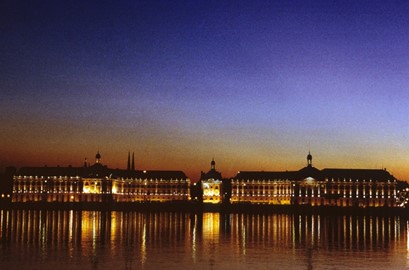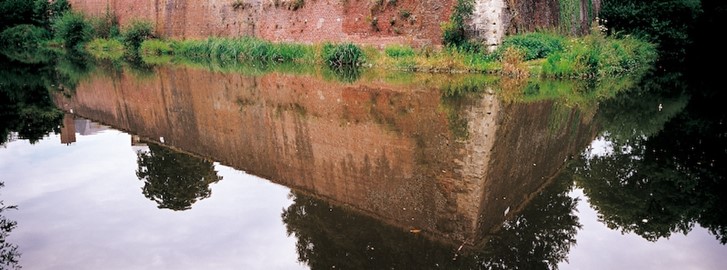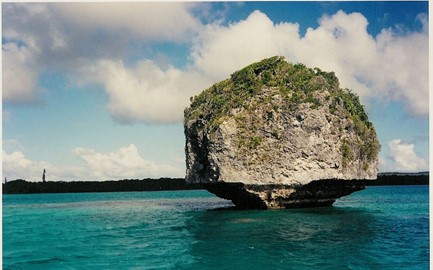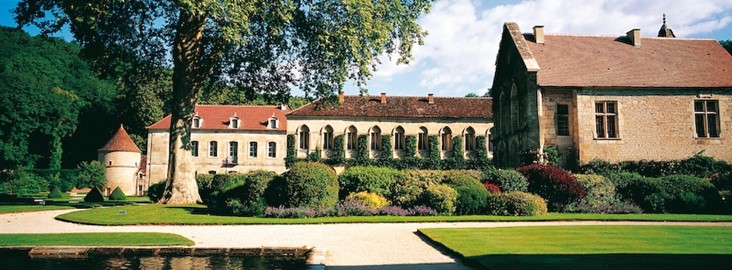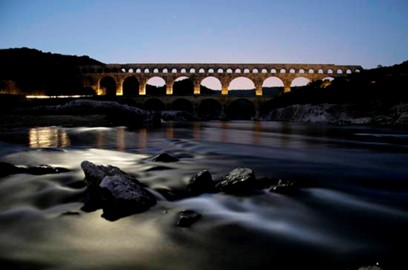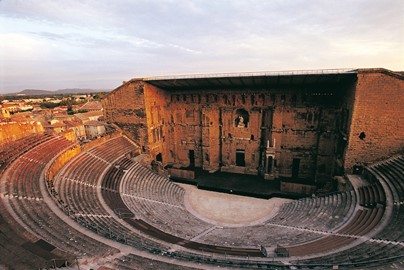region :: europe and north america
Sammallahdenmaki
Sammallahdenmäki, a UNESCO World Heritage Site in Finland, is a Bronze Age burial ground dating back to 1500–500 BC. It features 33 granite cairns, showcasing the funerary practices and social structures of Scandinavian Bronze Age culture. Notable structures include the unique 'Church Floor' and the elongated 'Long Ruin of Huilu,' set within a striking natural landscape. Inscribed in 1999, it offers a glimpse into ancient rituals, possibly linked to sun worship, and remains freely accessible to visitors.
Fortress of Suomenlinna
The Fortress of Suomenlinna, a UNESCO World Heritage site in Finland, is an impressive 18th-century sea fortress built across several islands. Constructed by the Swedish crown in 1748 to protect against Russian expansion, it features robust stone walls, bastions, and a strategic layout reflecting military architecture of the time. Today, it stands as a well-preserved historical monument, attracting visitors with its rich history, scenic views, and cultural significance.
Petajavesi Old Church
Petäjävesi Old Church, a UNESCO World Heritage site in Finland, is a wooden Lutheran church built between 1763 and 1765 by local peasants, showcasing exceptional Nordic log construction and vernacular architecture. Recognized in 1994, it blends Renaissance-style central planning with Gothic influences, reflecting the skills of its builders and the region’s cultural heritage. The church, including its 1821 bell tower, remains largely unchanged, offering a glimpse into 18th-century rural life and craftsmanshi... Read More
Verla Groundwood and Board Mill
The Verla Groundwood and Board Mill, a UNESCO World Heritage site in Finland, is a remarkably well-preserved example of a 19th-century rural industrial settlement focused on pulp, paper, and board production. Established in 1872 and operational until 1964, the site features original mill buildings, machinery, and workers' housing, offering a glimpse into the forest industry's early history. It was added to the UNESCO list in 1996 for its cultural significance and historical integrity. Today, it serves as a ... Read More
Old Rauma
Old Rauma, a UNESCO World Heritage site in Finland, is a well-preserved example of a traditional Nordic wooden town, recognized in 1991 for its unique medieval street layout and vernacular architecture. Situated on the Gulf of Bothnia, it features colorful wooden buildings, including homes and shops, centered around the 15th-century Holy Cross Church, a remnant of a Franciscan monastery. Despite fires in the 17th century, it retains its historical charm as a living community with residents and businesses. I... Read More
Vézère Valley
The Vézère Valley, a UNESCO World Heritage site in France, is renowned for its exceptional prehistoric significance. This region boasts over 150 archaeological sites, including 25 decorated caves, with the famous Lascaux Cave showcasing intricate Paleolithic wall paintings dating back over 17,000 years. Often called the 'cradle of human art,' it offers unparalleled insight into early human creativity and culture, complemented by its rich collection of ancient tools, fossils, and rock shelters. The site's pr... Read More
Fontainebleau
The Palace of Fontainebleau, a UNESCO World Heritage site in France, is a stunning example of French Renaissance architecture, blending medieval, Renaissance, and classical styles. Originally a royal hunting lodge, it was transformed into a grand palace by successive monarchs, notably Francis I, and served as a residence for French royalty for centuries. Its opulent interiors, including the Francis I Gallery with its intricate frescoes and stucco work, reflect its rich history. The palace remains a cultural... Read More
Arles
Arles, a UNESCO World Heritage site in France, is a historic city renowned for its well-preserved Roman monuments, including the ancient amphitheater and the Constantine Baths. The city also boasts a rich medieval heritage, with landmarks like the Saint-Trophime Church showcasing stunning Romanesque architecture. Arles inspired numerous works by Vincent van Gogh, who captured its vibrant landscapes and culture during his time there in the late 19th century. Today, it stands as a testament to its layered his... Read More
Avignon
Avignon, a UNESCO World Heritage site in France, is renowned for its well-preserved medieval architecture and rich historical significance. The city’s standout feature is the Palais des Papes, a grand 14th-century Gothic palace that served as the papal residence during the Avignon Papacy. Its historic center, encircled by intact ramparts, also includes the famous Pont d’Avignon, a partially surviving medieval bridge immortalized in song. Avignon’s cultural legacy and architectural treasures make it a captiv... Read More
Gulf of Porto
The Gulf of Porto, a UNESCO World Heritage site in France, is renowned for its stunning natural beauty, featuring dramatic red granite cliffs, clear turquoise waters, and diverse marine life. This coastal gem includes the Calanques de Piana, Scandola Nature Reserve, and Girolata Bay, showcasing unique geological formations and a rich ecosystem. Recognized in 1983, it stands as a testament to the region's exceptional environmental and cultural significance, attracting visitors with its picturesque landscapes... Read More
Fortified City of Carcassonne
The Fortified City of Carcassonne, a UNESCO World Heritage site in France, is a remarkably preserved medieval fortress dating back to the 13th century. Its imposing stone walls, towers, and drawbridges showcase a blend of Roman and Gothic architecture, offering a glimpse into Europe’s feudal past. The site includes the Château Comtal, a castle within the city, and the Basilica of Saint-Nazaire, known for its stunning stained-glass windows. Today, it stands as a testament to historical engineering and attrac... Read More
Paris, Banks of the Seine
Paris, Banks of the Seine, a UNESCO World Heritage site in France, is renowned for its historic and cultural significance. This iconic stretch along the Seine River showcases a remarkable ensemble of architectural masterpieces, including Notre-Dame Cathedral, the Louvre Museum, and the Eiffel Tower, reflecting centuries of artistic and urban development. Its designation highlights its outstanding universal value, preserving a unique blend of history, aesthetics, and human ingenuity for future generations.
Reims
The Cathedral of Notre-Dame, Former Abbey of Saint-Rémi, and Palace of Tau in Reims, France, form a UNESCO World Heritage site renowned for their historical and architectural significance. The Gothic-style cathedral, a masterpiece of 13th-century design, served as the coronation site for French kings. The nearby Abbey of Saint-Rémi, with its Romanesque and Gothic elements, preserves centuries of religious heritage, while the Palace of Tau, once an archbishop’s residence, showcases opulent interiors tied to ... Read More
Canal du Midi
The Canal du Midi, a UNESCO World Heritage site in France, is a remarkable 17th-century engineering feat stretching 240 kilometers, connecting the Atlantic Ocean to the Mediterranean Sea. Constructed between 1666 and 1681 under Pierre-Paul Riquet’s direction, it features 91 locks, numerous bridges, and aqueducts, showcasing innovative hydraulic design. Originally built for trade and transport, it now serves as a popular route for boating and tourism, celebrated for its historical significance and picturesqu... Read More
Routes of Santiago de Compostela in France
The Routes of Santiago de Compostela in France, a UNESCO World Heritage site, encompass a network of pilgrimage paths leading to the shrine of St. James in Spain. These historic routes, used since the Middle Ages, are dotted with significant churches, monasteries, and hospices that supported pilgrims on their spiritual journey. Recognized for their cultural and historical importance, they reflect centuries of religious devotion and architectural heritage. Today, they remain a testament to the enduring tradi... Read More
Lyon
Lyon, a UNESCO World Heritage site in France, is renowned for its rich history and cultural significance. The city boasts a well-preserved Renaissance old town, Vieux Lyon, with narrow cobblestone streets and charming traboules (hidden passageways). Its Roman heritage is evident in the ancient Théâtre Gallo-Romain, while the Basilica of Notre-Dame de Fourvière stands as a striking symbol of its architectural splendor. Lyon’s designation reflects its role as a historical crossroads, blending Gallo-Roman, med... Read More
Provins
Provins, a UNESCO World Heritage site in France, is a well-preserved medieval town renowned for its historical significance and annual medieval fairs. Once a thriving commercial hub in the 11th and 12th centuries, it features impressive fortifications, including ramparts and towers, alongside charming cobblestone streets and half-timbered houses. The town’s rich past comes alive through landmarks like the Tithe Barn and the underground galleries, offering a glimpse into its medieval legacy. Today, Provins a... Read More
Saint Emilion
The Jurisdiction of Saint-Émilion, a UNESCO World Heritage site in France, is a historic village renowned for its medieval architecture and exceptional viticultural landscape. Its well-preserved monolithic church, carved from a single limestone rock, and ancient underground catacombs highlight its rich history dating back to Roman times. The site’s unique blend of cultural heritage and centuries-old winemaking tradition, producing some of the world’s finest red wines, earned it global recognition. Visitors ... Read More
Le Havre
Le Havre, a UNESCO World Heritage site in France, is a remarkable example of post-World War II urban planning and architecture. Designed by Auguste Perret, the city showcases a modernist reconstruction with innovative use of reinforced concrete, blending functionality with aesthetic harmony. Its unique layout, featuring wide boulevards and a grid pattern, reflects a vision of renewal after wartime destruction. Key landmarks, like the St. Joseph’s Church with its striking tower, highlight Le Havre’s cultural... Read More
Bordeaux
Bordeaux, Port of the Moon, is a UNESCO World Heritage site in France, renowned for its exceptional urban ensemble reflecting over 2,000 years of history. Named for its crescent-shaped riverfront along the Garonne, it features elegant 18th-century architecture, grand boulevards, and iconic landmarks like the Place de la Bourse and its reflecting pool. The site’s historical significance as a thriving trade port and its well-preserved neoclassical design highlight its cultural and architectural value, earning... Read More
Fortifications of Vauban
The Fortifications of Vauban, a UNESCO World Heritage site in France, consist of a series of military structures designed by the renowned 17th-century engineer Sébastien Le Prestre de Vauban. These fortifications, built during the reign of Louis XIV, showcase innovative defensive architecture, including star-shaped bastions and strategic layouts adapted to the landscape. Recognized for their historical and architectural significance, they represent a pinnacle of military engineering from the era and continu... Read More
Lagoons of New Caledonia
The Lagoons of New Caledonia, a UNESCO World Heritage site in the French Pacific Ocean archipelago of New Caledonia, are a pristine marine expanse of coral reefs, atolls, and turquoise waters. Hosting vibrant ecosystems with rare fish, turtles, and dugongs, they form one of the world’s most diverse reef systems. This natural wonder highlights the beauty and fragility of oceanic biodiversity.
Cistercian Abbey of Fontenay
The Cistercian Abbey of Fontenay, a UNESCO World Heritage site in France, is a remarkably preserved 12th-century monastery exemplifying Cistercian simplicity and functionality. Founded in 1118, its austere stone architecture includes a church, cloister, and dormitories, reflecting the order’s monastic ideals. Nestled in a tranquil valley, it remains one of the oldest surviving Cistercian complexes. The abbey’s forge and gardens highlight its self-sufficient past. This site offers a serene glimpse into medie... Read More
Pont du Gard
Pont du Gard, a UNESCO World Heritage site in France, is an ancient Roman aqueduct bridge built in the 1st century AD to carry water across a river valley. Standing three tiers high, its massive stone arches showcase remarkable engineering and durability. Constructed without mortar, it remains one of the best-preserved structures of its kind. The bridge once supplied a thriving Roman colony with fresh water, highlighting advanced infrastructure. Its elegant design blends seamlessly with the natural landscap... Read More
Orange
The Roman Theatre of Orange, a UNESCO World Heritage site in France, is one of the best-preserved ancient theaters from the 1st century CE. Built into a hillside, its grand stage wall and tiered seating once hosted performances for thousands. The structure showcases Roman engineering and acoustic design at its finest. Its intricate carvings and robust stonework reflect the empire’s cultural influence. Today, it stands as a testament to antiquity’s architectural legacy. This site offers a striking glimpse in... Read More
